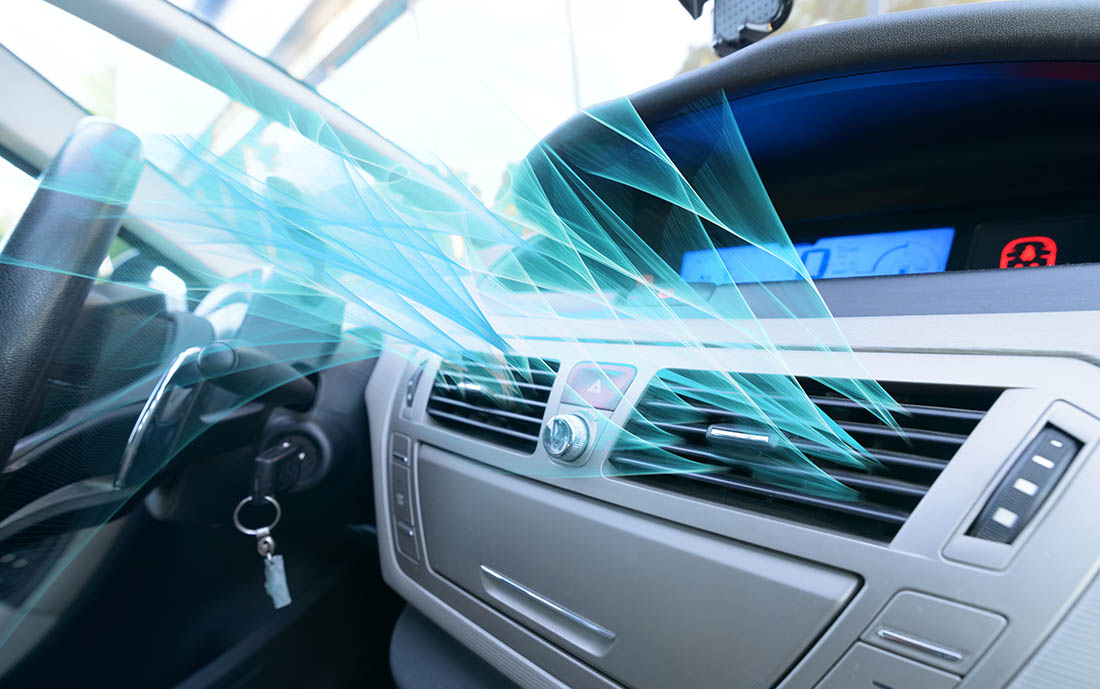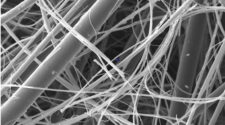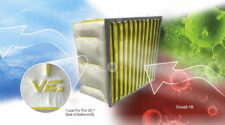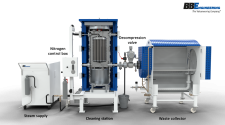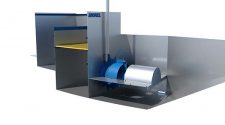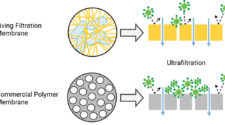What Could Stink in the Nostrils of Automotive Evaporator Cores
Rapid economic empowerment is driving a long-term surge in vehicle ownership. The increased number of cars has contributed to traffic-related air pollution and public health issues1-3. As a result, cities have become canyons for air pollution as they attract population, construction, traffic, and extensive energy use4. Increased urban vehicle emissions from light and heavy-duty vehicles pose a pollution challenge as pedestrians and cars coexist in the same proximity5. The transport sector contributes approximately one-quarter of all energy-related Greenhouse Gas (GHG) emissions6,7. Transport emissions have grown at an annual average of 1.7% from 1990 to 2022, faster than any other end-use sector7. Transport emissions are responsible for more than 3.2 million premature deaths annually8.
Cities constitute the primary source of greenhouse gas emissions. Several studies have suggested that most of the high concentrations of airborne pollutants that drivers, passengers, and pedestrians are exposed to are emitted by vehicles1-3,5,9. Nanosized particles, including those originating from the combustion of different materials, have been linked to various health concerns such as fibrosis, chronic inflammatory lung disease, and cancer10,11. Several studies have suggested that children living near roads with heavy-duty vehicle traffic have twice the risk of respiratory problems as those living near less congested streets12,13.
Air Pollution and Cabin Air Quality
Exhaust gases, tire abrasion, transportation systems, and factories pollute our atmospheric air. Driving in a contaminated urban environment where the outdoor air is filled with various types and concentrations of pollutants can challenge the cabin air filters14. Drawing outdoor polluted air into the cabin environment is a filtration-intensive process, given the limited space available for filter installation and the confined enclosures of vehicles.
Although poor air quality in buildings has gained more attention mainly due to the recent pandemic, cabin air quality does not garner the same concern, sufficient research funding, or appropriate actions to enhance it. Cabin air quality is paramount; some studies suggest that many individuals spend up to three hours daily in their cars. Today, air quality is critical in facilitating a healthy and comfortable cabin environment, and many automotive companies are competing to take it to the next level.
The HVAC Systems of Light-duty Vehicles
The air conditioning (AC) systems used in the automotive industry are shown in Figure 1, illustrating the refrigerant flow throughout the system. The process starts when the compressor receives cool, low-pressure gas, which is compressed into a gas with high pressure and temperature. The refrigerant is pumped out of the discharge side of the compressor and flows into the condenser. The condenser then cools high-pressure, high-temperature gas using a fan-cooled heat exchanger to turn it into high-pressure liquid. It is then passed through the receiver dryer, which has a desiccant bag inside to filter and absorb small amounts of moisture that may contaminate the refrigerant.
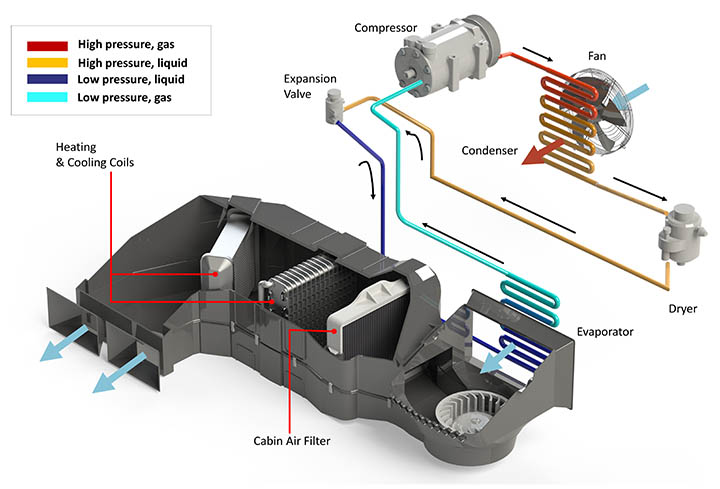
The high-pressure liquid passes through the expansion valve, allowing throttle under constant heat (enthalpy) conditions into a low-pressure liquid, as shown in Figure 1. Eventually, the low-pressure liquid flows from the expansion valve directly into the evaporator, chilling its walls. A blower motor pushes filtered air into the evaporator core, where heat is transferred so the driver and passenger enjoy cool and clean air through the vehicle’s dashboard vents. In the final step to close the air conditioning cycle, the liquid refrigerant turned into a gas is then returned to the compressor for another cycle.
Delivery of Clean Air to the Vehicle Cabins
When an unusual smell emanates from our air vents, our first impulse might be to check under the seat for an abandoned food bag rather than the HVAC system. Therefore, air filters are vital in protecting both the occupants and the components of the HVAC systems, which is critical to maintaining their sustainable performance to provide clean air. Figure 2 illustrates pollutants captured by a pleated filter compared with a new one. Introducing outdoor air filled with various pollutant types suspended in the air in the proximity of intake, whether from neighboring vehicle exhaust or emissions from the car itself, will further challenge the installed cabin air filter. Many filtration manufacturers introduced pleated media capable of capturing PM and gaseous pollutants using a sandwiched sorbent with a particulate filter substrate, as shown in Figure 3. The confined space of vehicle cabins and that allocated for filter installation highlights the importance of efficient filtration performance. Failing to capture pollutants and having ineffective filtration surface area can expose drivers and passengers to greater risk and impact their health in the short- and long-term.
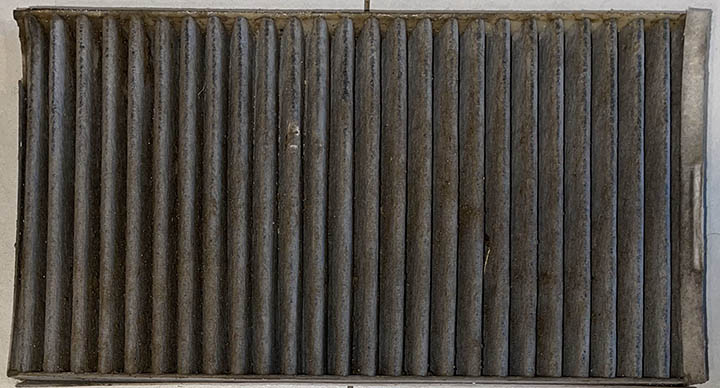
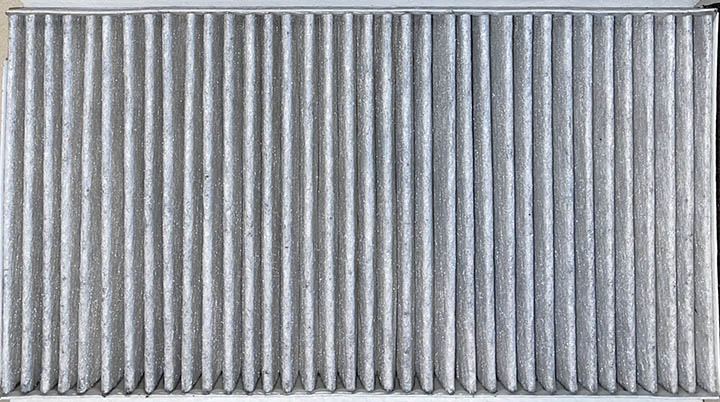
Ensuring the safety of drivers and passengers is essential to arriving safe, sound, and healthy at the final destination. However, when particles leak or seep through cabin air filters, they can form a dust cake on ducts (Figure 4), impellers (Figure 5) and/or the surface of the evaporator core (Figure 6). Moisture and dust-cake formation can foster a medium for microorganism growth and further contribute to the degradation of cabin air quality. Furthermore, moisture from human (and animal) occupants in recycled air, rain, or snow from outdoor air introduced into the cabin can lead to pleat deformation. Such deformation can result in filter performance degradation and, eventually, deteriorated air quality delivered into the cabin.
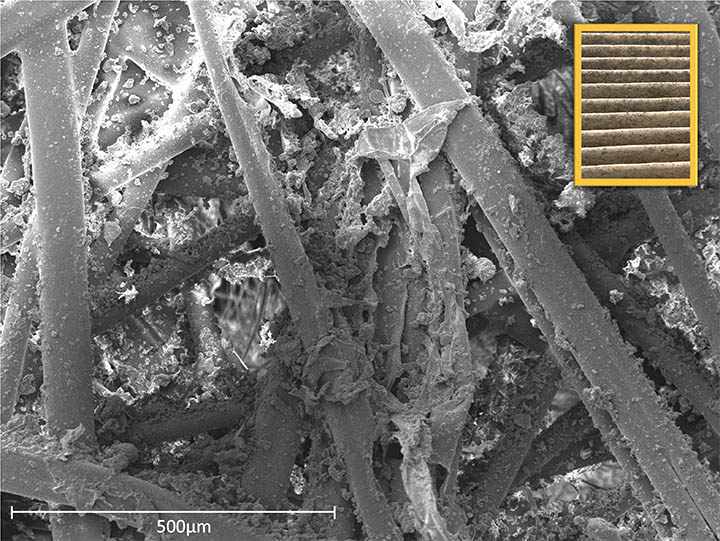
Subjecting cabin occupants to various airborne pollutants represents a health risk and can increase the likelihood of an asthma attack for those susceptible to poor air quality. Recent studies have addressed the impact of cabin air quality on road safety and highlighted that a sneeze could cause a driver to drive around 50 meters – eyes closed – if their vehicle is going at 100 km/h15. Furthermore, excessive PM and gaseous pollutants on the evaporator core can hinder the heat-transfer mechanism’s effectiveness and compromise HVAC performance. On the other hand, the settlement of bioaerosols on any component of the HVAC systems can increase the risk of their uncontrolled transmission, particularly on the evaporator core, which is usually moist.
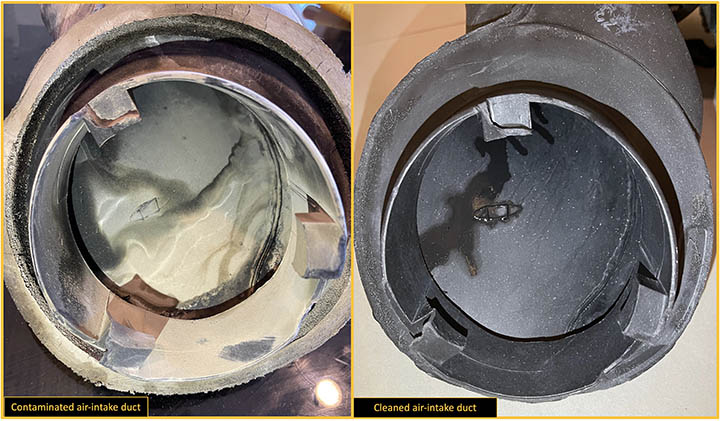
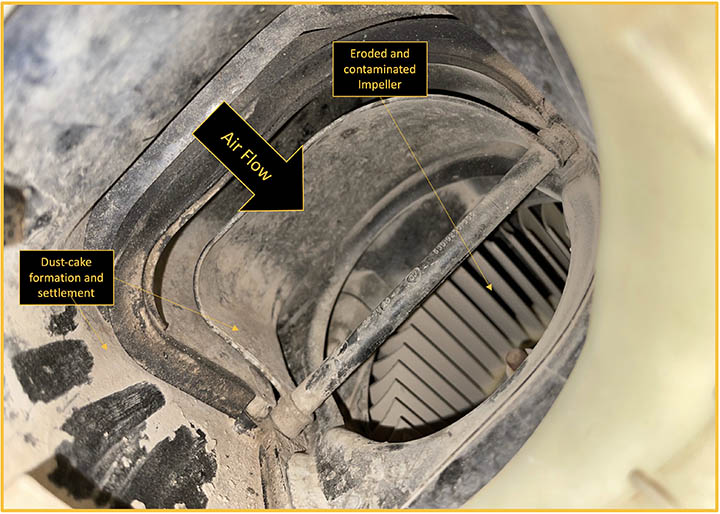
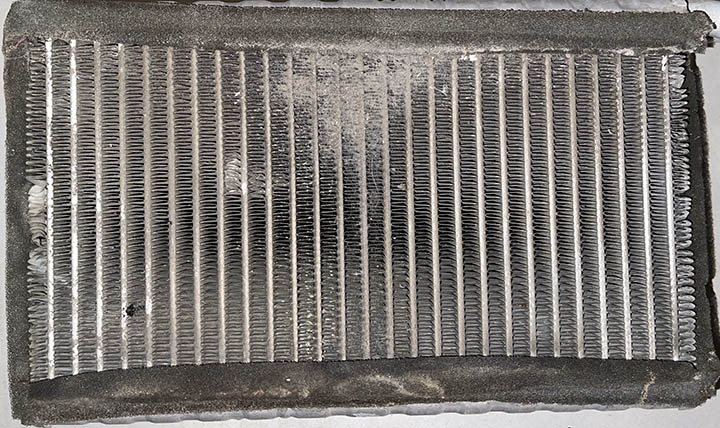
Another aspect that can enhance cabin air quality is identifying the sources of indoor pollution in a given vehicle. While pollutants can infiltrate the cabin through systems leaks, unsealed windows, or other cracks, particularly in aging cars, uncaptured multiple particulates and gaseous contaminants such as dust, pollen (Figures 7 & 8), and VOCs can impact cabin air quality. Furthermore, exposing occupants of the confined cabin space of the passenger compartment to these contaminants can pose a significant risk to human respiratory systems, even at low concentrations.
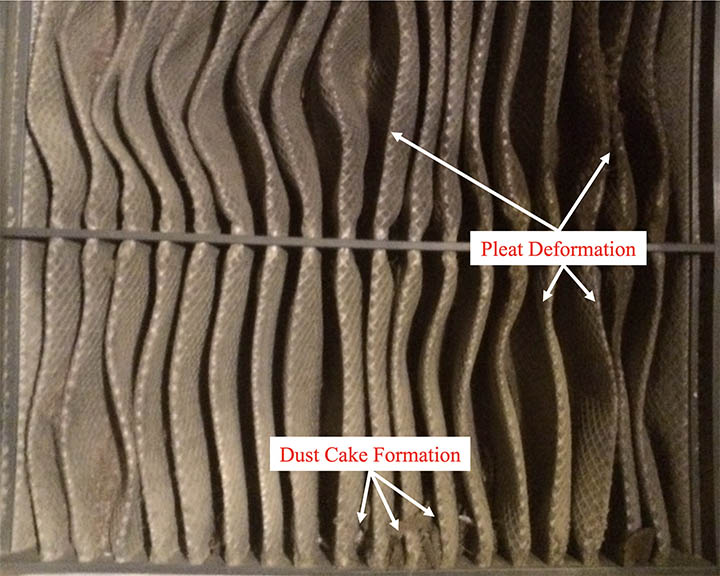
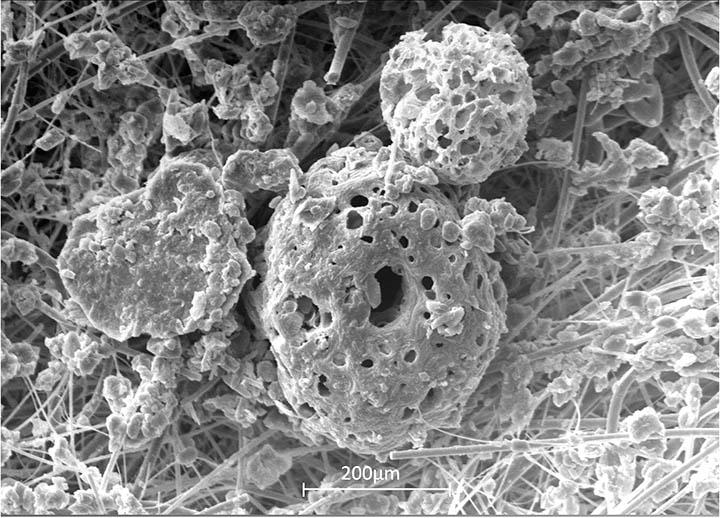
Emissions from car interiors, including dashboard material and upholstery, can also deteriorate cabin air quality16. Some studies indicate that emitted VOC concentrations from car interiors such as dashboards can further increase due to heat and ultraviolet light, intensifying their impact on the well-being of drivers and passengers17. Breathing polluted air can irritate the throat, cause severe health effects, such as asthma and Chronic Obstructive Pulmonary Disease (COPD), and increase cardiovascular risk10. Drivers and occupants depend on a relatively small cabin filter (Figure 7) for significant filtration performance. These filters capture many pollutants with multiple types, concentrations, and size distribution while protecting the drivers and their loved ones.
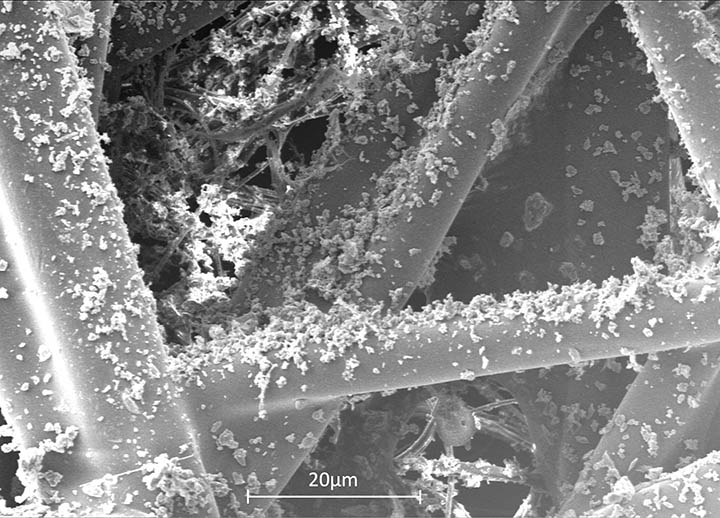
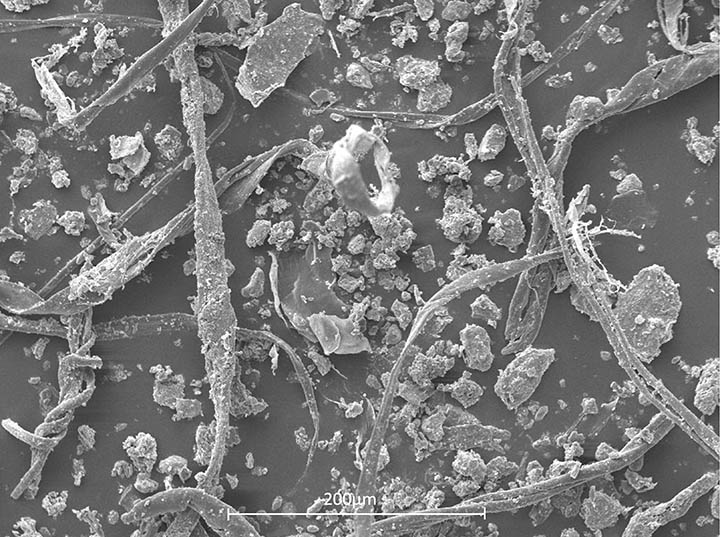
An Ethical Obligation
Cabin air quality is challenged by multiple pollutants emitted from various outdoor and indoor sources with varying impacts depending on different ventilation and driving conditions. Air filtration, ventilation mode, airflow rate, the age and airtightness of the vehicle, interior materials, the number of passengers, and the ambient pollution level outside the car can also influence cabin air quality. Inhaling clean cabin air when traveling by car is critical to our well-being and enjoyment of a safe and healthy driving experience. Facilitating all available technologies, not just HVAC and filtration, to make such an experience safe and pleasant is essential. Therefore, it is time to position the technology we possess to protect the lives of loved ones – especially newborns and elderly – because it is, simply, an ethical obligation. Granting cabin air quality the attention it deserves speaks to our high aspirations of a sustainable, livable, and healthy indoor and outdoor environment.
References:
- Tong, Z., Li, Y., Westerdahl, D., Adamkiewicz, G., Spengler, J.D., 2019. Exploring the effects of ventilation practices in mitigating in-vehicle exposure to traffic-related air pollutants in China.
Environ. Int. 127, 773–784. - Wu, S., Deng, F., Niu, J., Huang, Q., Liu, Y., Guo, X., 2010. Association of heart rate variability in taxi drivers with marked changes in particulate air pollution in Beijing in 2008. Environ. Health Perspect. 118, 87–91.
- Fruin, S., Westerdahl, D., Sax, T., Sioutas, C., Fine, P.M., 2008. Measurements and predictors of on-road ultrafine particle concentrations and associated pollutants in Los Angeles. Atmos. Environ. 42 (2), 207–219.
- Ai ZT, Mak CM. From street canyon microclimate to indoor environmental quality in naturally ventilated urban buildings: Issues and possibilities for improvement. Build Environ. 2015 Dec;94:489-503. doi: 10.1016/j.buildenv.2015.10.008. Epub 2015 Oct 20. PMID: 32288035; PMCID: PMC7116918.
- Buzzard NA, Clark NN, Guffey SE. Investigation into pedestrian exposure to near-vehicle exhaust emissions. Environ Health. 2009 Mar 30;8:13. doi: 10.1186/1476-069X-8-13. PMID: 19331669; PMCID: PMC2673207.
- Kopp, Andreas. 2015. Reducing Greenhouse Gases : GHG Analysis in Transport. Transport and ICT connections,no. 8;. World Bank Group, Washington, DC. © World Bank. https://openknowledge.worldbank.org/handle/10986/22304 License: CC BY 3.0 IGO.”
- EPA. https://www.epa.gov/ghgemissions/global-greenhouse-gas-emissions-data[24].
- IEA (2023), World Energy Outlook 2021, Transport. https://www.iea.org
- IEA (2021), World Energy Outlook 2021, IEA, Paris https://www.iea.org/reports/world-energy-outlook-2021.
- Byrne JD, Baugh JA. The significance of nanoparticles in particle-induced pulmonary fibrosis. Mcgill J Med. 2008;11(1):43-50.
- United Nations Environment Programme. https://www.unep.org/explore-topics/energy/what-we-do/transport.
- Migliore E, Berti G, Galassi C, Pearce N, Forastiere F, Calabrese R, Armenio L, Biggeri A, Bisanti L, Bugiani M, Cadum E, Chellini E, Dell’orco V, Giannella G, Sestini P, Corbo G, Pistelli R, Viegi G, Ciccone G; SIDRIA-2 Collaborative Group. Respiratory symptoms in children living near busy roads and their relationship to vehicular traffic: results of an Italian multicenter study (SIDRIA 2). Environ Health. 2009 Jun 18;8:27. doi: 10.1186/1476-069X-8-27. PMID: 19534827; PMCID: PMC2708149.
- Vreeland, H., RodneyWeber, Bergin, M., Greenwald, R., Golan, R., Russell, A.G., Verma, V., Sarnat, J.A., 2017. Oxidative potential of PM2.5 during Atlanta rush hour: measurements of in-vehicle dithiothreitol (DTT) activity. Atmos. Environ. 165, 169–178.
- Ljungman, P.L., Wilker, E.H., Rice, M.B., Austin, E., Schwartz, J., Gold, D.R., Koutrakis, P., Benjamin, E.J., Vita, J.A., Mitchell, G.F., Vasan, R.S., Hamburg, N.M., Mittleman, M.A., 2016. The impact of multipollutant clusters on the association between fine particulate air pollution and microvascular function. Epidemiology 27 (2), 194–201.
- Daily Mail UK, online. https://www.dailymail.co.uk/health/article-2278669/Drivers-sneeze-wheel-cause-2-500-accidents-WEEK–experts-say-stay-roads.html.
- Guo R, Zhu X, Zhu Z, Sun J, Li Y, Hu W, Tang S. Evaluation of Typical Volatile Organic Compounds Levels in New Vehicles under Static and Driving Conditions. Int J Environ Res Public Health. 2022 Jun 9;19(12):7048. doi: 10.3390/ijerph19127048. PMID: 35742297; PMCID: PMC9223280.
- Xu B, Chen X, Xiong J. Air quality inside motor vehicles’ cabins: A review. Indoor and Built Environment. 2018;27(4):452-465. doi:10.1177/1420326X16679217.


